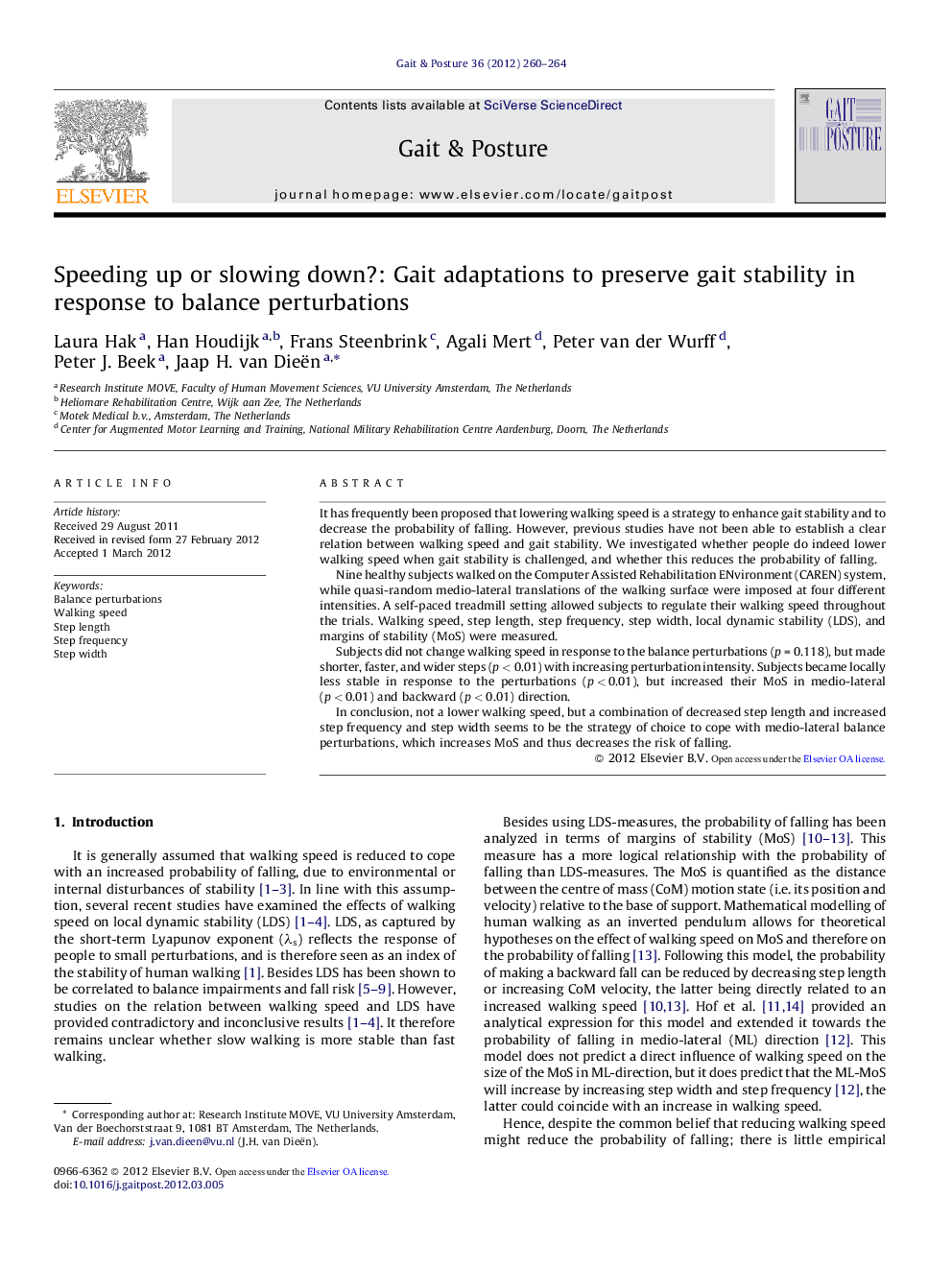| کد مقاله | کد نشریه | سال انتشار | مقاله انگلیسی | نسخه تمام متن |
|---|---|---|---|---|
| 6208064 | 1265671 | 2012 | 5 صفحه PDF | دانلود رایگان |

It has frequently been proposed that lowering walking speed is a strategy to enhance gait stability and to decrease the probability of falling. However, previous studies have not been able to establish a clear relation between walking speed and gait stability. We investigated whether people do indeed lower walking speed when gait stability is challenged, and whether this reduces the probability of falling.Nine healthy subjects walked on the Computer Assisted Rehabilitation ENvironment (CAREN) system, while quasi-random medio-lateral translations of the walking surface were imposed at four different intensities. A self-paced treadmill setting allowed subjects to regulate their walking speed throughout the trials. Walking speed, step length, step frequency, step width, local dynamic stability (LDS), and margins of stability (MoS) were measured.Subjects did not change walking speed in response to the balance perturbations (p = 0.118), but made shorter, faster, and wider steps (p < 0.01) with increasing perturbation intensity. Subjects became locally less stable in response to the perturbations (p < 0.01), but increased their MoS in medio-lateral (p < 0.01) and backward (p < 0.01) direction.In conclusion, not a lower walking speed, but a combination of decreased step length and increased step frequency and step width seems to be the strategy of choice to cope with medio-lateral balance perturbations, which increases MoS and thus decreases the risk of falling.
⺠The effect of balance perturbations on walking speed, step length, step frequency, and step width was measured. ⺠Besides, short-term Lyapunov exponents in the margins of stability were calculated to quantify the risk of falling. ⺠Subjects did not slow down, but increased step frequency and width and decreased step length in response to the perturbations. ⺠Subjects became locally less stable, but increased their sideward and backward margins of stability.
Journal: Gait & Posture - Volume 36, Issue 2, June 2012, Pages 260-264